The No-Soil Secret: How to Grow Thriving Houseplants in Just Water
I’ve spent a lot of time helping people with their houseplants, and I see the same story over and over. Someone comes in, excited about their new green friend, only to return a few weeks later with a sad, yellowed plant, convinced they have a “black thumb.” Nine times out of ten, the culprit is watering. It’s a tricky balance between too much (hello, root rot) and too little, especially when you can’t see what’s going on under the soil.
In this article
Early in my career, one of the old-timers at the nursery told me something that completely changed my perspective. He said, “Plants don’t need soil; they need what soil provides.” That’s it. That’s the whole secret. Soil is just the middleman for water, nutrients, and oxygen. Once that clicks, you realize you can deliver those things in a much simpler way. Growing plants directly in water is one of the cleanest, most fascinating methods out there. It takes the guesswork out of watering and lets you watch the entire process, from a tiny root nub to a full-on flourishing plant. It’s a game-changer for beginners and a fun project for seasoned plant parents.
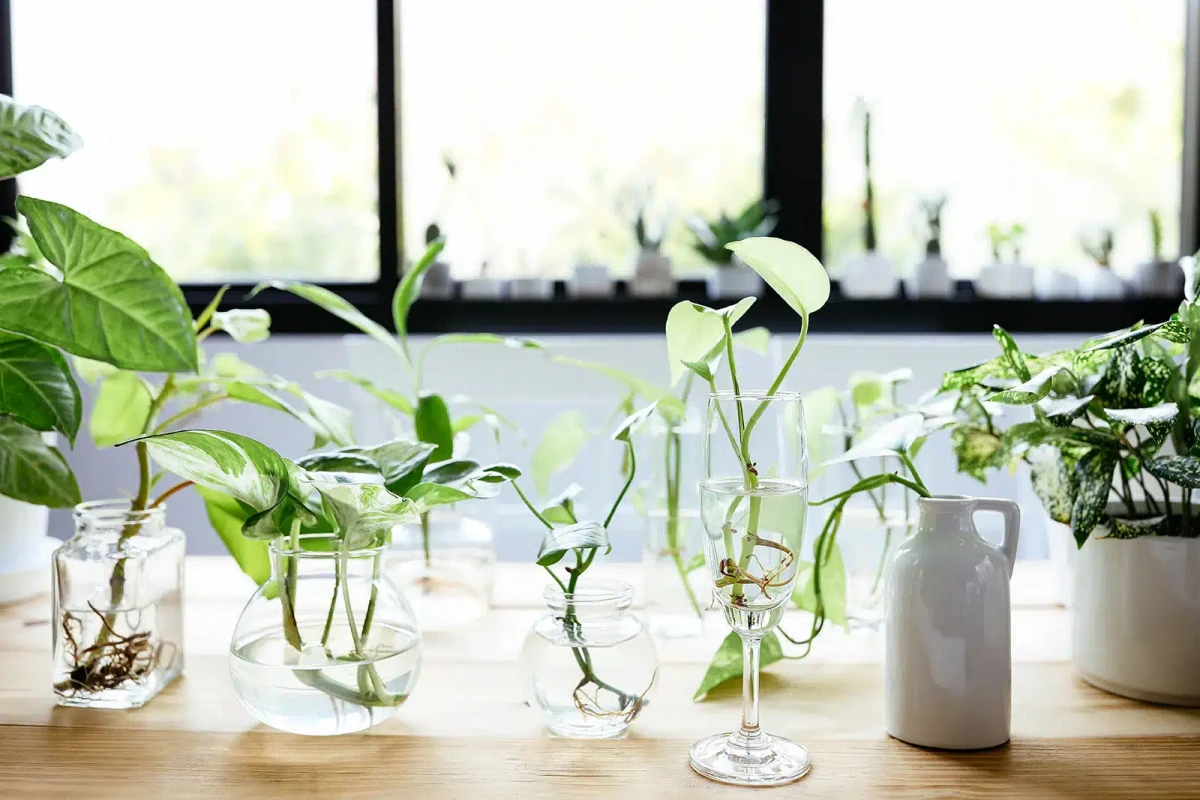
Want to try this, like, right now? Seriously, you can have a new plant propagating in the next five minutes. Grab a clean glass jar, find a Pothos plant (ask a friend for a snippet!), and follow the cutting steps I’ll outline below. You’ll likely see new roots forming in just a couple of weeks. It’s that easy.
So, How Does This Even Work?
It sounds a little like magic, but the science is pretty straightforward. Plants make their food through photosynthesis using light, water, and carbon dioxide. But their roots have a job to do, too: they need to pull in water, minerals (the plant’s ‘food’), and, most importantly, oxygen. In a pot, soil is supposed to be a porous sponge, holding water while leaving tiny air pockets for the roots to breathe.
When you overwater a plant in soil, you fill all those air pockets. The roots literally can’t breathe and start to drown. This creates a low-oxygen environment where nasty bacteria and fungi have a party, leading to the dreaded root rot.
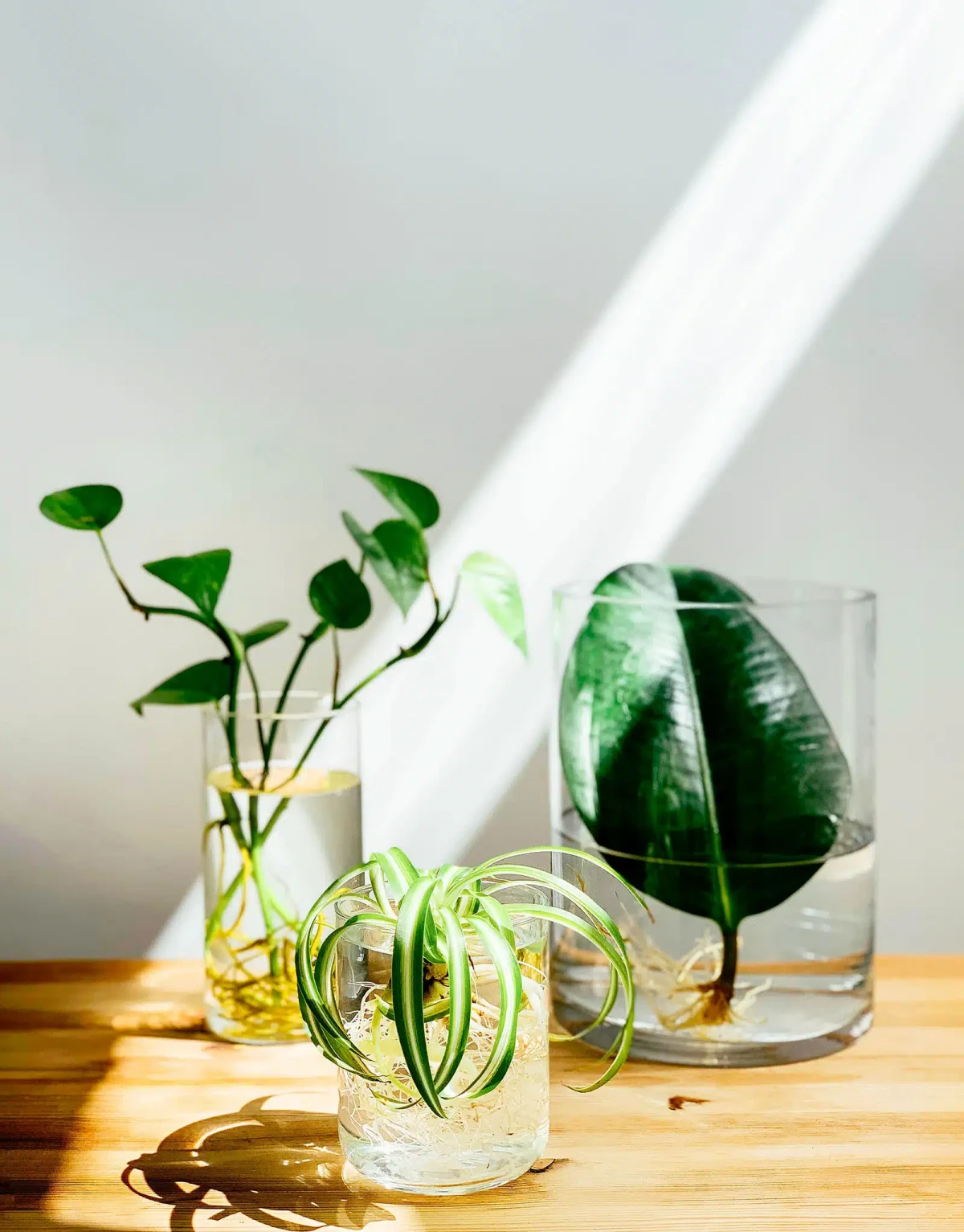
By growing a plant in water, you’re just cutting out the middleman (the soil). The water provides hydration, and you’ll add a few drops of nutrients for long-term health. But the most overlooked part? Oxygen. Stagnant water loses its dissolved oxygen over time. That’s why you have to change the water regularly. It’s not just to keep it from looking grimy; it’s to give your plant a fresh gulp of air and wash away waste products. Understanding this is the key to avoiding mushy, smelly roots.
Your Super Simple Shopping List
The best part about this method is how affordable it is. You don’t need a fancy setup, just a few basics. Honestly, you can get everything you need for under $20, or even for free if you get creative.
- A Vessel: This can be anything from a recycled spaghetti sauce jar to a cool vase you find at a thrift store. You have two main options here. Clear glass (vases, jars) is awesome because you can watch the roots grow, which is incredibly cool. The only downside is that light hitting the water encourages algae. It’s not a deal-breaker, but you’ll have to clean it more often. Opaque vessels (ceramic, dark glass) block the light, pretty much eliminating algae. This is what the pros use for long-term setups. A quick tip: You can get the best of both worlds by putting a clear jar inside a slightly larger, decorative opaque pot. (Cost: Free to $20)
- Good Water: We’ll get into the specifics, but start with what you have. If your tap water is harsh, you might eventually spend a few bucks on filtered or distilled water, but it’s not a day-one requirement.
- Liquid Fertilizer: For a plant to thrive long-term, it needs food. A bottle of balanced liquid fertilizer designed for hydroponics is a fantastic investment. Look for brands like General Hydroponics FloraGro or Dyna-Gro Foliage-Pro. You can find them online or at most garden centers. A small bottle will run you about $10-$15 and will literally last you for a year or more.
- Sharp Scissors: A clean cut is a healthy cut. A basic pair of craft scissors or pruning shears works perfectly. (Cost: around $5, or just use a sharp pair from your kitchen).
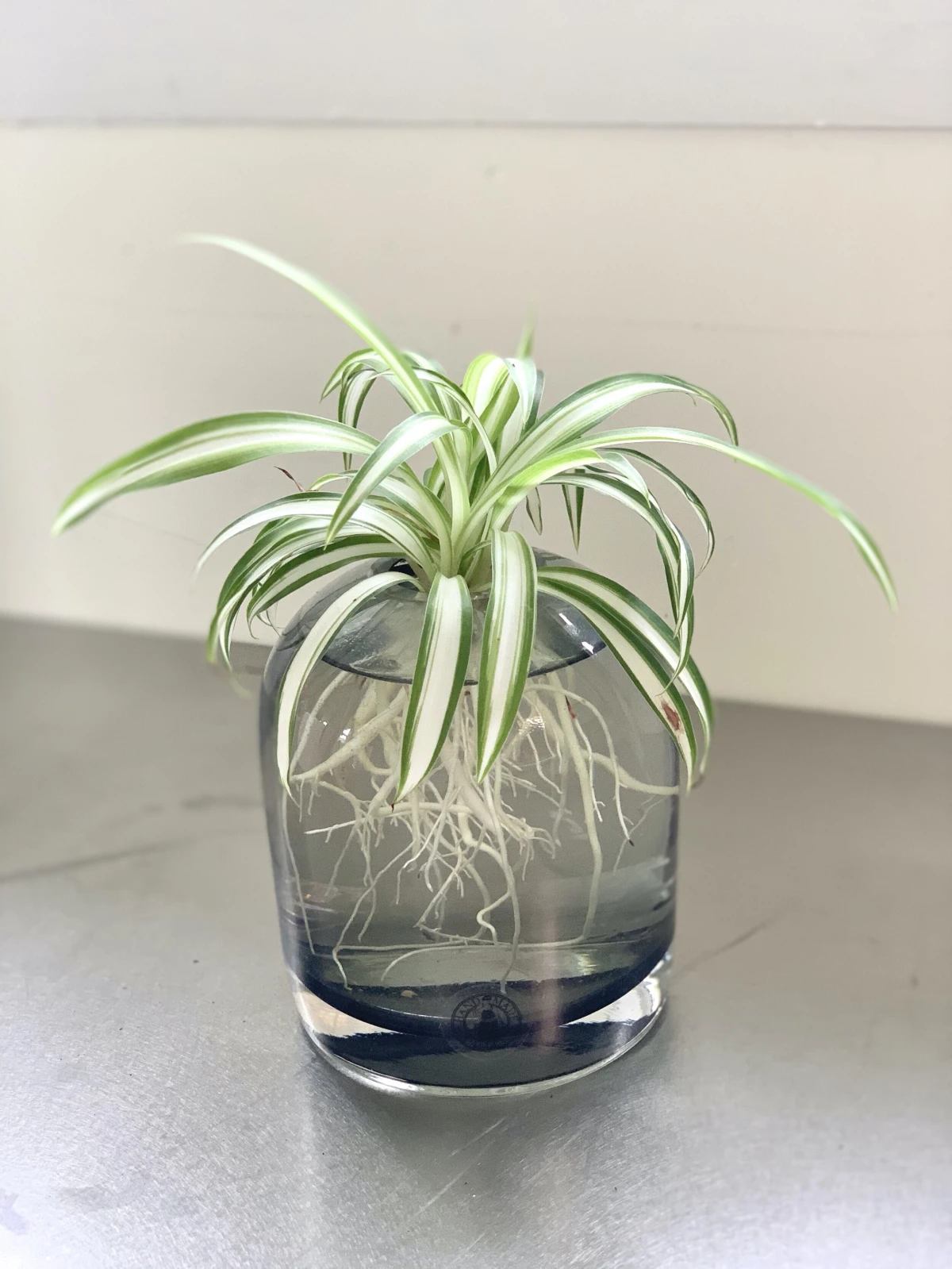
Picking the Perfect Plant (The Easy Ones)
While tons of plants can root in water, some are just naturals at it. They’re forgiving, fast-growing, and perfect for building your confidence. Here are my top five, no-fail picks.
1. Pothos
This is the classic for a reason—it’s nearly indestructible. It’s the foolproof starter plant. To take a cutting, find a healthy vine and look for the nodes—the little brown bumps on the stem where leaves grow. New roots sprout from here. Cut about a half-inch below a node, making sure your cutting has at least 2-3 nodes. Pinch off the lowest leaf so it won’t rot in the water. Pop it in your jar, cover a node or two with water, and that’s it! You’ll see white roots appear in 2-4 weeks. Heads up! Pothos is toxic to pets if they chew on it, so place it on a high shelf.
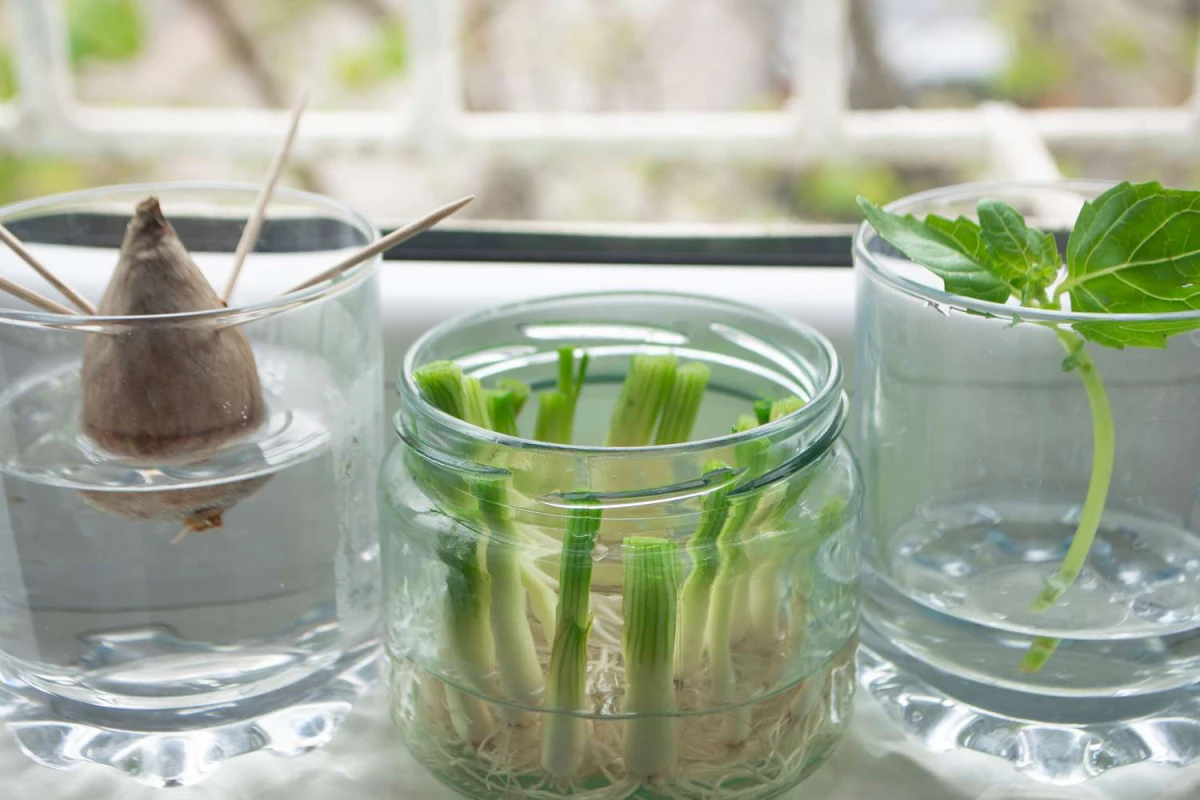
2. Spider Plant
A happy spider plant is a factory of babies, or “pups,” that dangle from the main plant. These are designed for propagation! Snip off a pup that has some tiny little root nubs already forming at its base. When you place it in water, the key is to only submerge the very bottom of the pup, keeping the leaves dry. They root super fast, often within a couple of weeks. Oh yeah, and good news for pet owners: the spider plant is one of the few on this list that’s completely non-toxic to cats and dogs!
3. Inch Plant
Also known as the Wandering Dude, this plant is an explosive grower with stunning purple and silver leaves. Its stems root so easily that you can almost just look at them and they’ll sprout. The process is the same as for Pothos: cut below a node, remove the bottom leaves, and place it in water. They grow so fast you’ll probably need to prune them to keep them looking tidy. Just a word of caution: like Pothos, this plant can cause skin irritation in pets, so keep it out of reach.

4. Lucky Bamboo
First things first: this isn’t actually bamboo! It’s a type of Dracaena, and that matters because its care is totally different. It absolutely thrives in water but is a bit of a diva about water quality. It’s extremely sensitive to the chlorine and fluoride in most tap water, which can cause yellow leaves and brown tips. For this plant, I strongly recommend using filtered, distilled, or even rainwater. It makes a world of difference. The pebbles you often see in the arrangements are just there to hold the stalks up. When you change the water every two weeks, give the pebbles a good rinse, too. And if a stalk turns completely yellow and mushy, pull it out immediately—it’s a goner and can spread bacteria.
5. Heartleaf Philodendron
Often mistaken for Pothos, this vining plant is another champion of water culture. Its leaves are a bit softer and more distinctly heart-shaped. Propagation is identical to Pothos—snip below a node and place it in water. They are incredibly reliable and have a classic, elegant look. And just like their Pothos cousins, they are toxic if ingested, so be mindful around pets and small kids.

The Simple Routine for Long-Term Health
Growing in water is low-maintenance, but it’s not no-maintenance. A simple routine will keep your plants happy for years.
- Water Changes are a Must: Every 7 to 14 days, change the water completely. Don’t just top it off, as that lets waste and minerals build up. A full swap replenishes oxygen and keeps the environment fresh.
- A Monthly Deep Clean: About once a month, it’s spa day. Gently take the plant out, set it aside, and scrub the inside of your vessel with a bottle brush and a bit of dish soap. Rinse it really, really well to get all the soap off before putting the plant back with fresh water.
- Fertilizer Schedule: During the growing season (spring and summer), add your quarter-strength fertilizer solution every other water change. In the fall and winter, plants slow down, so you can cut back to feeding them just once a month or so.
- Give it a Haircut: Healthy roots should look white or light-colored and feel firm. If you spot any brown, mushy, or smelly roots during a water change, trim them off with your clean scissors. You can also prune the leaves and vines to encourage a fuller shape or just to control its size.
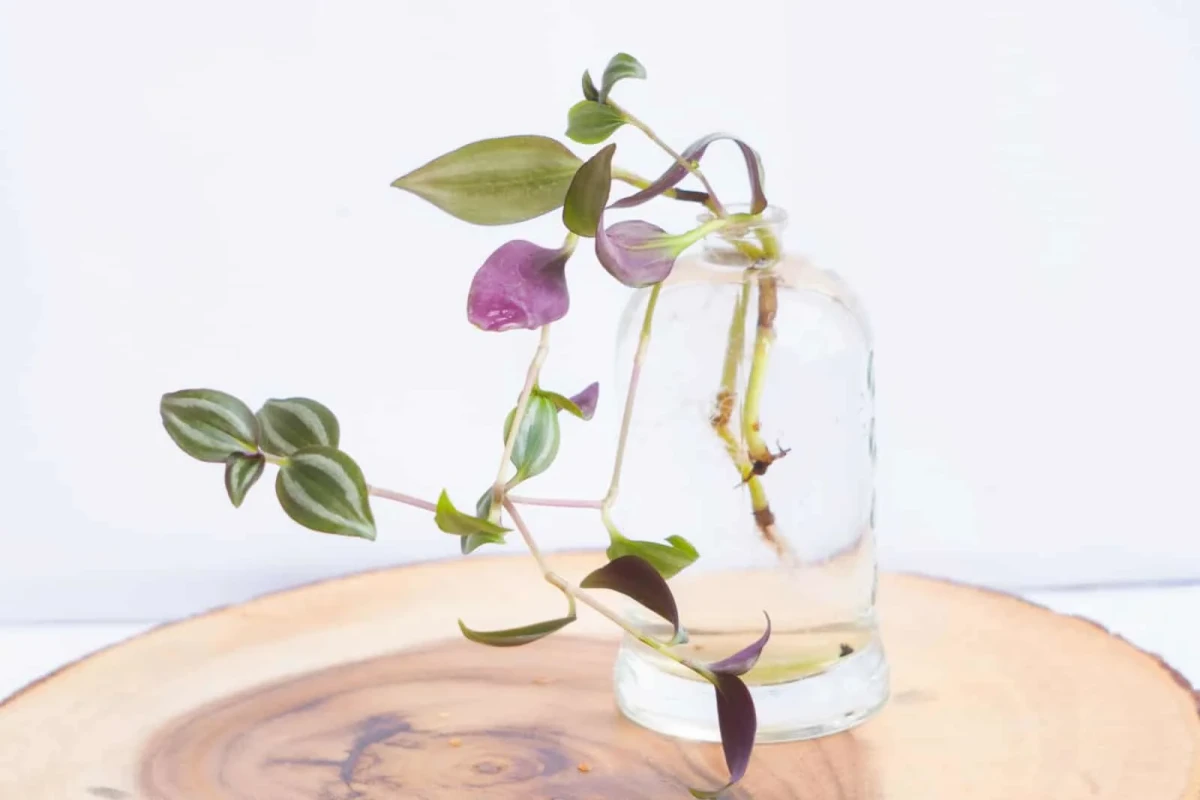
Troubleshooting: When Things Go Wrong
Even with the best care, you might hit a snag. Don’t worry, it’s usually an easy fix.
Problem: The Green Slime (Algae)
If you’re using a clear vase, you’ll eventually see a green film. This is just algae, and it shows up when light hits the nutrient-rich water. It’s not going to kill your plant, but it competes for resources. The fix is simple: clean the vase more often or switch to an opaque one.
Problem: The #1 Plant Killer (Root Rot)
This is the big one. You’ll know it by the brown, mushy roots and often a swampy smell. It’s caused by a lack of oxygen. Act fast! Take the plant out of the water. With your sterile scissors, trim away every single bit of rotted root until you only see healthy white tissue. Rinse the good roots well. For a really bad case, you can soak the remaining roots for about 10 minutes in a solution of one part 3% hydrogen peroxide to two parts water to kill any lingering bacteria. Then, put it in a sparkling clean vase with fresh water.
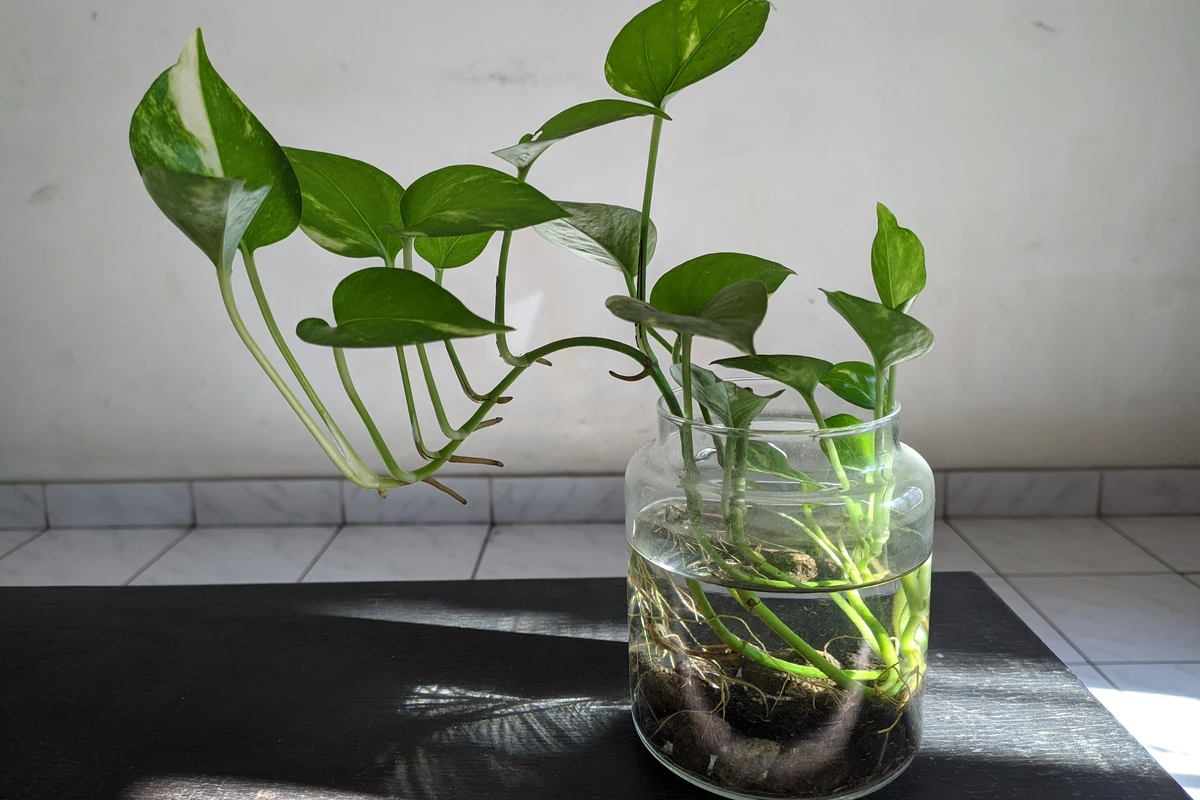
Problem: Yellowing Leaves
First, don’t panic. If it’s just one or two old leaves at the base falling off, that’s just the plant’s natural life cycle. But if lots of leaves are yellowing at once, it’s a cry for help. The most common causes are too much direct sunlight (scorching the leaves) or using too much fertilizer (burning the roots). Check its location and review your feeding schedule.
Ready to Level Up? Here’s What’s Next
Once you’ve got the hang of this, you might be curious about what else you can do.
Making the Move to Soil
Roots grown in water are more delicate than soil roots. You can’t just shove them into dense potting soil and expect them to thrive. To move a water-propagated plant to a pot, you need to acclimate it. From my experience, the best transition mix is super airy. I use a blend of about 50% regular potting soil, 30% perlite, and 20% orchid bark. This gives the new roots oxygen and space. After potting, keep the soil consistently moist (but not soggy!) for the first few weeks, then gradually ease into a normal watering routine.
A Peek into Semi-Hydroponics (LECA)
If you love the soil-free idea and want a more stable, long-term system, you should check out LECA (Lightweight Expanded Clay Aggregate). It’s basically a system of growing in porous clay pebbles. You clean the plant’s roots, place it in a pot filled with LECA, and set that pot in a reservoir of nutrient water. The clay pebbles wick moisture up to the roots, providing perfect hydration and amazing airflow. It’s a fantastic next step.
A Final Few Thoughts
Before you turn your home into a water garden, just a couple of final reminders. Many of the most popular houseplants, including Pothos and Philodendrons, are toxic if eaten. Always check a plant’s safety profile if you have curious pets or little kids. And of course, be mindful of placing water-filled jars around electronics or on nice wood furniture!
And remember, even seasoned gardeners lose a plant now and then. Sometimes a cutting just doesn’t take. Don’t get discouraged! Growing plants in water is a wonderfully simple and satisfying way to bring more green into your life. It connects you directly to the living, breathing process, and that’s a pretty amazing thing to watch up close.
Inspirational Gallery
Clear Glass: The perfect choice for showcasing the beautiful, intricate root development, turning your plant into a living sculpture. The downside? Algae loves light, so you may need to clean the vessel more often.
Amber or Dark Glass: This option mimics the darkness of soil, which naturally inhibits algae growth. You lose the visual of the roots, but it’s a fantastic low-maintenance choice.
For long-term missions, NASA has extensively researched hydroponics as a way to grow fresh food for astronauts in space. If it works on the International Space Station, it can work on your windowsill!
Do my water-grown plants really need fertilizer?
Yes, for long-term health! Water provides hydration, but not the crucial minerals found in soil. After about a month, once roots are established, add a specialized liquid hydroponic fertilizer. Unlike standard plant food, these are balanced for soilless culture. Just a few drops of a product like General Hydroponics FloraGro or Dyna-Gro Foliage-Pro every 4-6 weeks is enough to keep your green friends thriving.
The trusty Pothos mentioned in the article is a great start, but many other common houseplants take beautifully to water. Try these easy-going varieties:
- Monstera Deliciosa (a single leaf with a node will do!)
- Spider Plant (use the little “spiderettes” that hang down)
- Philodendron Heartleaf
- Chinese Evergreen (Aglaonema)
- Lucky Bamboo (Dracaena sanderiana)
The one rule to remember: Ensure no leaves are sitting below the waterline. Submerged leaves will quickly rot, fouling the water and introducing bacteria that can kill your cutting before it even sprouts roots. If needed, pinch off the lowest leaf or two to create a clean, bare stem for the water.
- It creates an elegant, organized display for multiple cuttings.
- It saves space on a crowded desk or shelf.
- It makes changing the water for all your propagations quick and easy.
The secret? A simple propagation station. You can find stylish ones from brands like Modern Sprout or easily DIY one by drilling holes in a block of wood to hold a few glass test tubes.
Don’t be afraid to think outside the box for your vessels. A vintage perfume bottle, a shapely olive oil container, or a collection of old apothecary bottles from a thrift store can become a unique and deeply personal home for your water-grown plants, adding character that a simple jar can’t match.
A little green slime on your glass isn’t a disaster! That’s just algae, a natural photosynthetic organism that appears when water, nutrients, and light mix.
While a lot of it can look messy and compete for nutrients, a small amount is harmless. To manage it, simply wipe the inside of your vessel with a cloth or bottle brush when you change the water every week or two. It’s a sign of a healthy little ecosystem.










